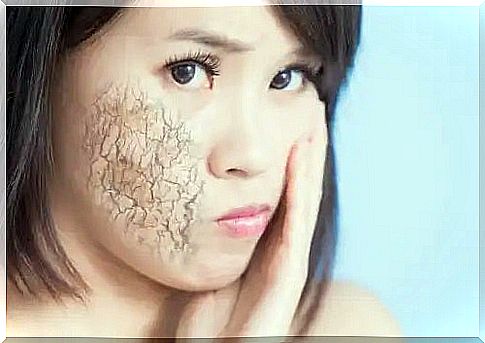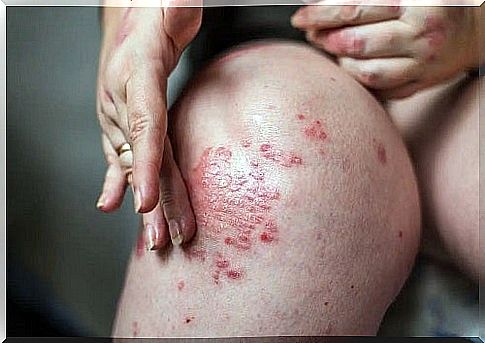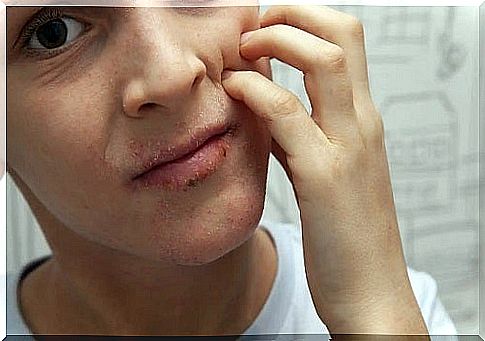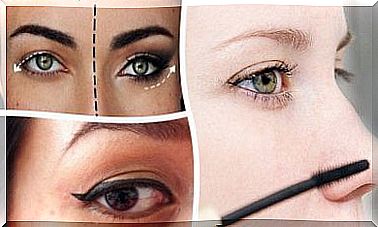The Relationship Between Skin And Emotions

Until a few decades ago, talking about the relationship between skin and emotions was a very risky business. Today, we know that there is such a relationship. Research in this regard has led to the birth of a new field of study: psychodermatology.
Psychodermatology is a very well defined discipline that studies the relationship between skin and mind. Broadly speaking, it divides the disorders into three categories: psychophysiological, primary psychiatric and secondary psychiatric. Below, we will talk about this and show you why it is important to control your emotions if you want to take care of your skin.
What is the relationship between skin and emotions?
Before talking about the relationship between skin and emotions, we need to clarify the categories we set out at the beginning. By psychophysiological disorders we mean skin problems that worsen or react to emotional states. Psoriasis is the best example (though not the only one).
Primary psychiatric disorders are psychiatric disorders that are manifested by skin conditions; most of them are self-induced: for example, trichotillomania. Secondary psychiatric disorders are related to episodes of low self-esteem or social phobia. An example of this is cystic acne.
In this sense, skin conditions can be aggravated or developed by emotional disorders, but they can also cause mental changes as a consequence. The relationship is two-way. The bigger the problem, the greater the physical or psychological consequences.
Based on the evidence, we present some diseases that explain the relationship between skin and emotions.

Psoriasis
According to researchers, a high percentage of exacerbations or episodes of psoriasis are related to psychological influences. Stress is the most important situation, in addition to conditioning the approach chosen to stop the evolution of the disease.
The relationship between stress and psoriasis is paradoxical, because the disease is fueled by the suffering itself. It is a vicious cycle that is difficult to stop. Experts say that most diagnoses of this condition established before the age of 40 are directly related to stress.
Atopic dermatitis
Atopic dermatitis is a disorder that causes redness of the skin. His relationship with stress is something that various studies have shown. Among the treatment alternatives is psychotherapy.
In fact, there is strong evidence that some psychotherapy techniques, such as cognitive-behavioral therapy, biofeedback, and short dynamic psychotherapy, have good results in controlling the disease.
It is not uncommon for adult patients, especially when it comes to extreme episodes, to use antidepressants as an adjunct to the main therapy. This is another reason that shows the close relationship between skin and emotions.
Hyperhidrosis
Hyperhidrosis is a condition in which patients experience excessive sweating. It is often associated with exercise or a rise in temperature, but studies and research have shown that hyperhidrosis can also be triggered by stress or anxiety.
People develop different emotional sequelae. Social phobia and low self-esteem are among the main problems.
Hives
Another example that highlights the relationship between skin and emotions is hives. More than half of such episodes do not have a clear explanation, so some experts suggest that stress plays a major role. On average, up to 50% of patients with urticaria live with stressful situations.
Some people, when faced with memories or stimuli that evoke a past abuse or traumatic situation, may develop this skin condition. Therefore, psychological support can be a great ally during treatment.
Of course, we can go on to list the diseases and disorders that explain the relationship between skin and emotions:
- Congenital acne
- Alopecia areata
- Herpes simplex virus and human papilloma virus that can be reactivated by emotional changes
- Dermatitis
- Illusions of parasitosis
- Neurotic excoriations
- Psychogenic itching
- Vitiligo there is evidence)
There are also so-called sensory skin disorders . This term includes skin conditions that cannot be associated with an accurate diagnosis. Although their nature is partially unknown, experts indicate that anxiety or depression may be the cause of illness. Burns, itching of the scalp, stinging of the skin and general itching are some examples.
Other examples of the relationship between skin and emotions
Although skin diseases and disorders are the best example of the relationship between skin and emotions, the problems are manifested in other ways. Let’s look at some examples:
- Fear: When you feel fear, your skin reacts to this emotional stimulus. One of the most well-known consequences is goosebumps. Chills and sweating may also occur.
- Shame: the skin reacts in different ways. Partial paralysis or redness of the face occurs due to increased blood flow under the skin.
- Joy: it is one of the strongest emotions, so it is natural to affect the largest organ. The skin releases tension. Its color changes as blood flow is stronger.

Here are some examples of how emotions affect the appearance of the skin. Of course, reactions can be triggered by different emotions.
Awareness of this relationship is of great importance to prevent sudden emotional changes that negatively affect the appearance of the skin. Helps patients with dermatological pathologies to control anxiety and social phobia.









